Inventor of the MultiKeratome
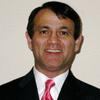 Tom
M. Schossau, MD, MEng-Physics
Tom
M. Schossau, MD, MEng-Physics
Innovative Scientific Engineering (ISE)
Dr. Tom Schossau developed this new instrument using his background and expertise from various experiences and applying concepts and principles.
"Dr. Tom," as many call him, grew up in various places because his father was a career Sergeant Major (SGM) in the Field Artlllery, who served with distinction and where moving was not uncommon. To work for the family during the depression, SGM Paul E. Schossau quit high school and in 1939, enlisted in the military where he earned his GED. Like other families with relatives in Germany, SGM Schossau served during World War II for its entirety, from the invasion of North Africa to Sicily to Normandy, and later, two tours during the Korean Conflict and two tours to Vietnam. Emphasis in academics, athletics and extracurricular activities instilled by both father and mother, Reiko Hara from Nara, Japan, served as the foundation for learning, discipline and motivation to excel - "Take the opportunities to learn and to improve."
"Dr. Tom" maintains a variety of interests as reflected by his achievements. His early involvement in math, science, engineering and community affairs began with earning a scholarship to the Frontiers of Science Institute at the University of Northern Colorado and selection to Colorado Boys' State as a junior, with recognition as the Outstanding Science Student at Widefield High School upon graduation as Valedictorian in 1975.
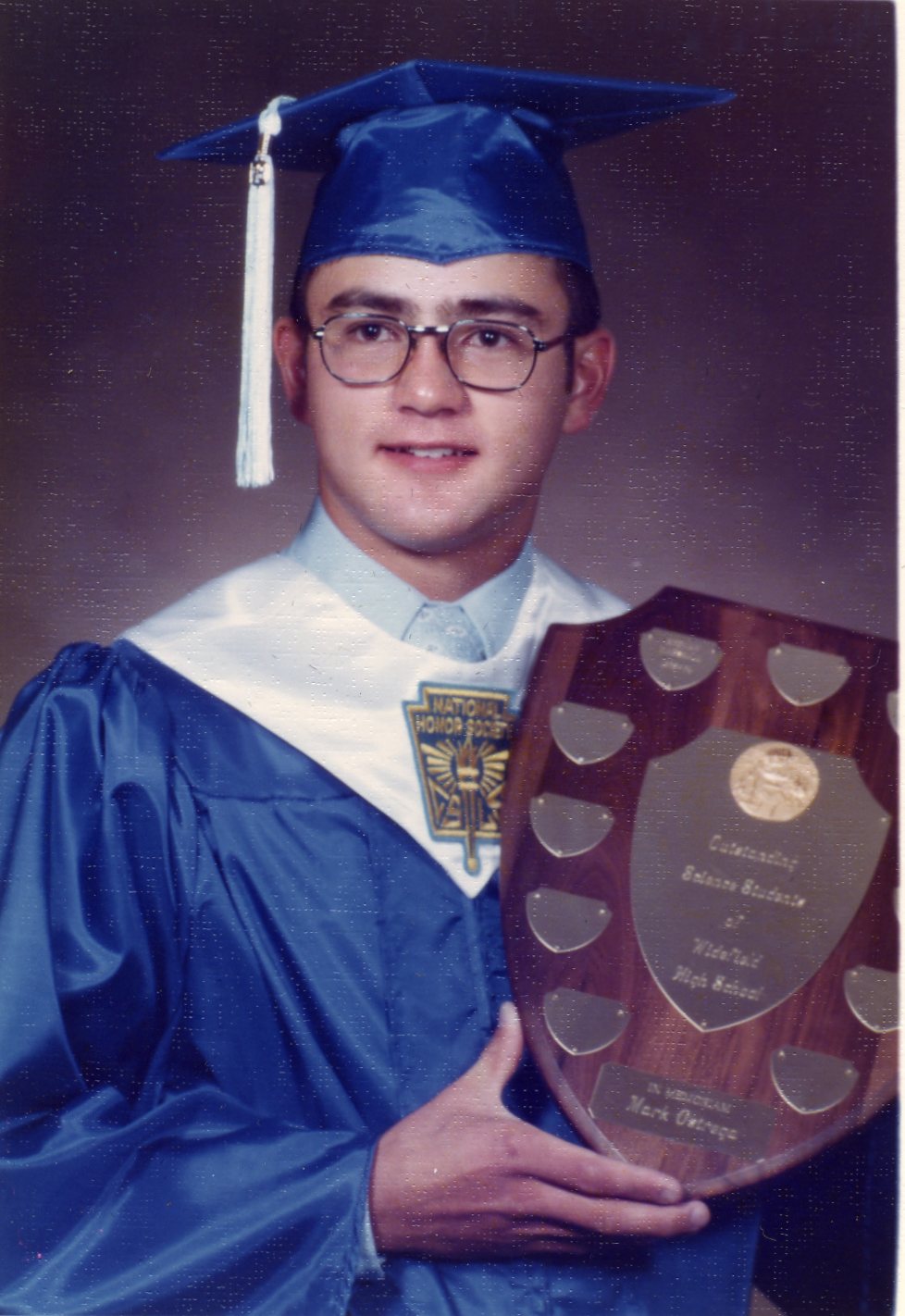 |
| 1975, Graduation, Widefield High School Valedictorian, NHS President, Ostrego Memorial Science Award. |
Although given special considerations for pilot training, the uncorrected visual acuity was not waiverable, and Dr. Schossau accepted a commission as a second lieutenant in the (US Army) Air Defense Artillery (ADA) continuing his father's footsteps in the Artillery branch. Dr. Schossau consistently served in the combat arms or "troop" units, in South Korea along the DMZ, with the 82d Airborne Division and with the 7th Light Infantry Division, and consistently
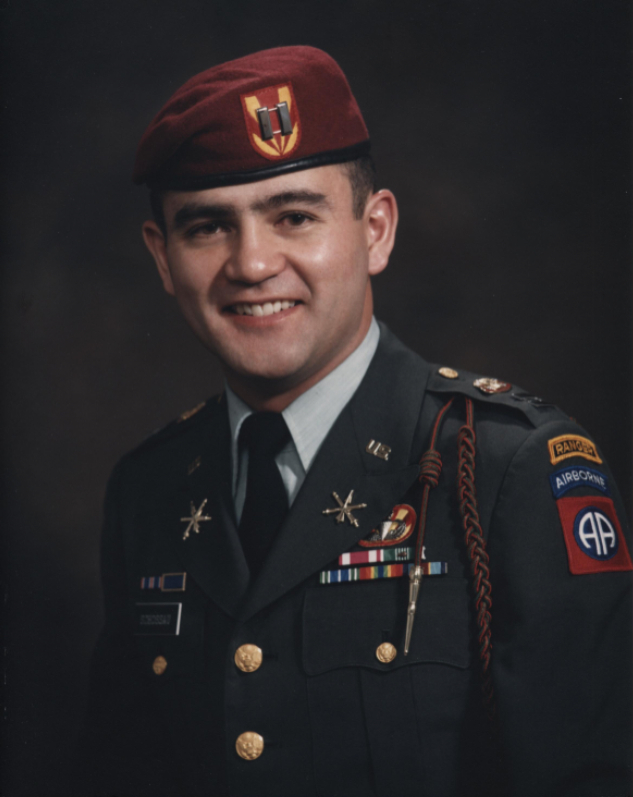 |
| 1985, Captain, US Army 3d Battalion, 4th Air Defense Artillery, 82d Airborne Division, Ft. Bragg, NC. &ldquoAirborne!&rsquo &lsquoRangers Lead the Way!&rdquo |
 at that time, having earned the
Meritorious Service Medal (w/Oak Leaf Cluster), Commendation Medal
(w/Oak Leaf Cluster), Achievement Medal (w/Oak Leaf Cluster), Air Force
Outstanding Unit Award, Master Parachutist, Ranger Tab (3d row above
left side of class sign), and the Saint Barbara's Award for distinctive
service/contribution in the Air Defense Artillery. Of
at that time, having earned the
Meritorious Service Medal (w/Oak Leaf Cluster), Commendation Medal
(w/Oak Leaf Cluster), Achievement Medal (w/Oak Leaf Cluster), Air Force
Outstanding Unit Award, Master Parachutist, Ranger Tab (3d row above
left side of class sign), and the Saint Barbara's Award for distinctive
service/contribution in the Air Defense Artillery. Of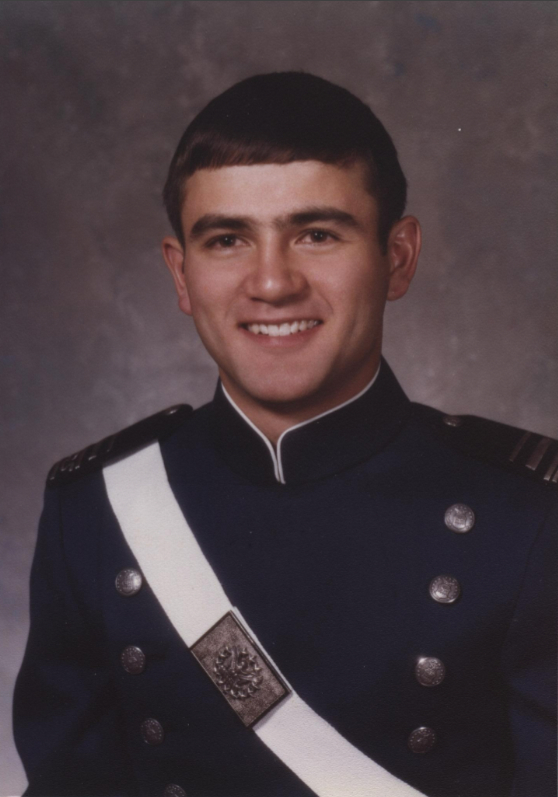 |
| 1979, Graduation, United States Air Force Academy BS Chemistry (& Engineering), Distinguished Military Graduate (Magna Cum Laude). |
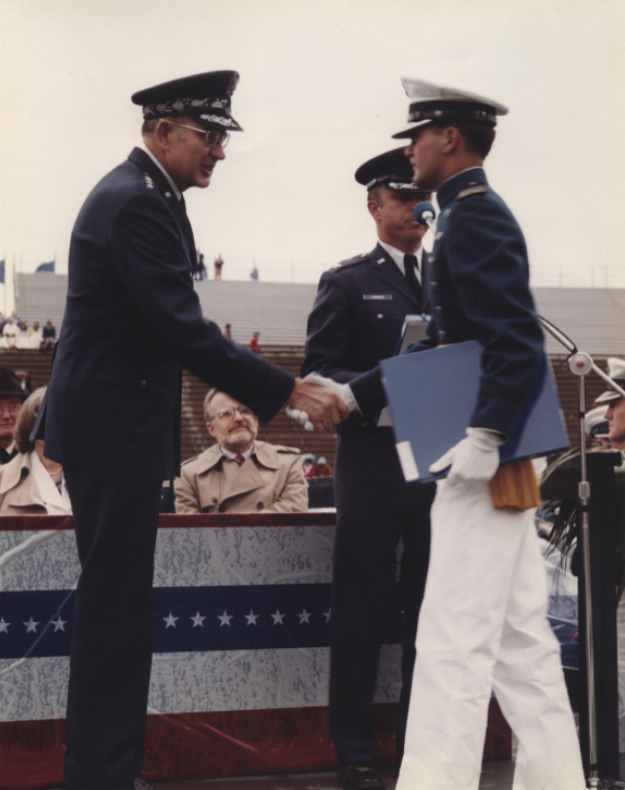 |
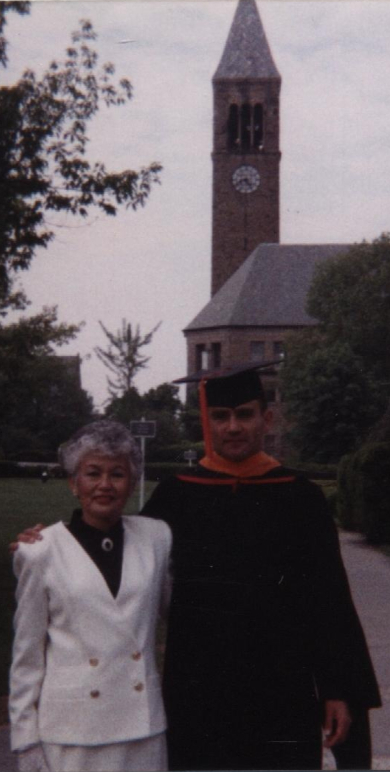 |
| 1990, Graduation (with Mother), Cornell University Master of Engineering, Engineering Physics. |
Tom enjoys the application of science and engineering in solving problems, and considers mathematics as a fundamental tool. Although earning all A's in every math course, and the highest attainable GRE score, he considers the beginning and culmination of his formal math education as his most significant events. While in grade school at SA Wilson School in Colorado, Tom won two, 3-cent passes for milk for a flash-card contest in class. For Tom, the most fun, but probably the most difficult math course was in grad school because Professor Graeme Bailey was always so enthusiastic in teaching the relatively abstract material which required considerable outside referencing, reading and working problems. Advisor/Professor Cliff Pollack was equally inspiring in engineering physics.
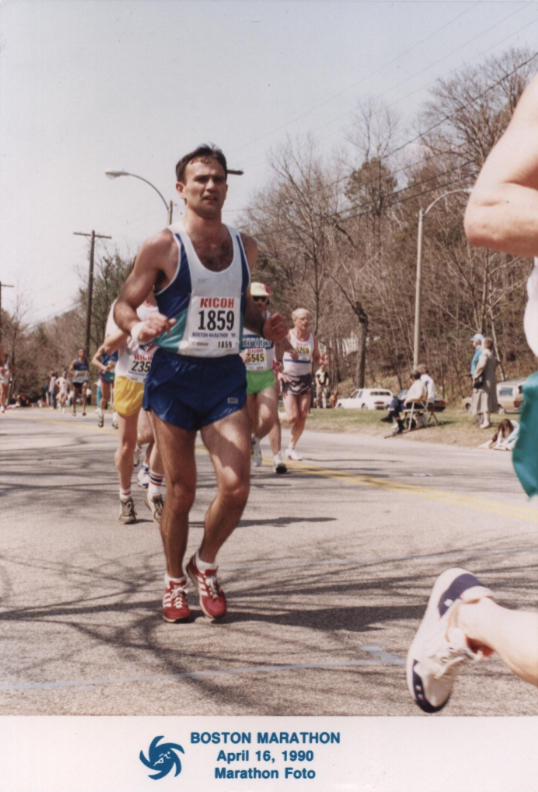 |
| 1990, Boston Marathon, &ldquoHeartbreak Hill&rdquo, &ldquoOn the road, again&rdquo . . . five weeks after bilateral hamstring tears, clocking a great time of 2:06 .. . just to get to the starting line! |
"The Spectrum In Life"
There is SCIENCE
where all of the laws are always faithfully obeyed,
then there is MEDICINE that is
known not to be an exact Science,
and then there is POLITICS that
may often defy common sense and logical reasoning.
